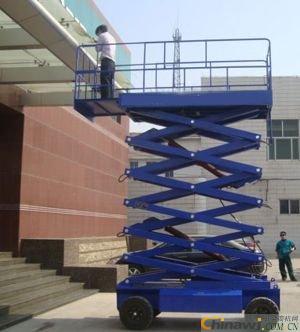Our company specializes in a wide range of lifting equipment, including lifts, lifting platforms, aluminum alloy lifts, boarding bridges, self-propelled lifts, fixed hydraulic lift platforms, crank lifts, cylinder lifts, aerial work platforms, hydraulic landing bridges, hydraulic pallet trucks, and other custom hydraulic products. We also offer tailored design and manufacturing services for automotive hydraulic lifts based on specific user requirements. These lifts are essential tools for vertical vehicle transportation, designed to meet the needs of car transport over floors, maximizing space utilization in three dimensions.
As these devices become more popular, users should be aware of basic maintenance practices to ensure safe and efficient operation. Regular checks, maintenance, and servicing not only extend the lifespan of the hydraulic lift but also enhance its performance during use. For instance, it's crucial to ensure that the transmission system has sufficient lubricating oil, and consumables must be inspected, repaired, or replaced regularly. Mechanical bolts, especially those subjected to frequent vibration—such as those in rotating crane parts and shafts—should be checked for looseness. If found loose, they should be tightened immediately or replaced if necessary.
Here are the recommended maintenance intervals for hydraulic lifts:
1. Daily maintenance (per shift)
2. Minor repairs after 500 hours of operation
3. Major repairs after 1,000 hours of operation
4. Full overhaul after 3,000 hours of operation
In addition to time-based maintenance, regular mechanical and electrical inspections are essential. Here are some key maintenance steps:
1. Frequently check and adjust the brake shoes and brake wheel clearance to ensure smooth and reliable braking. Clean any dirt from the friction surfaces using gasoline or thinner.
2. Lubricate components such as chains, external gears, and hydraulic systems according to the lubrication table specifications.
3. Inspect all chains for slippage or wear. Replace them if they exceed the allowable limits.
4. Check all connections for tightness. When under pressure, inspect body connection bolts and ensure all shafts have fully opened split pins.
5. Monitor the normal operation of each mechanism and listen for unusual noises. Address any issues promptly.
6. Check for jamming or tightness in the electric leveling safety section.
7. Regularly inspect wires and cables for damage and replace or repair damaged sections immediately.
8. If the motor overheats, stop the machine, troubleshoot the issue, and ensure proper bearing lubrication before resuming operation.
9. Keep brush contact surfaces clean and adjust brush pressure so that the contact area is at least 50%.
10. Maintain cleanliness in control boxes and distribution boxes, and remove dust from electrical equipment regularly.
11. Ensure the travel switch contacts of all safety devices are reliable and polish any arcing contacts promptly.
Although hydraulic lifts produced by professional manufacturers are of high quality, regular inspection and maintenance remain critical. Always perform a no-load check when using the hydraulic lift for the first time each day to prevent unexpected issues.
For more information on maintenance and best practices, visit: http://news.chinawj.com.cn
 Submission:
Submission: 
 Submission:
Submission: 
Wedge Anchor
Wedge Anchor
Hebei Qianmu Fastener Manufacturing Co., Ltd , https://www.qmjgjfasteners.com